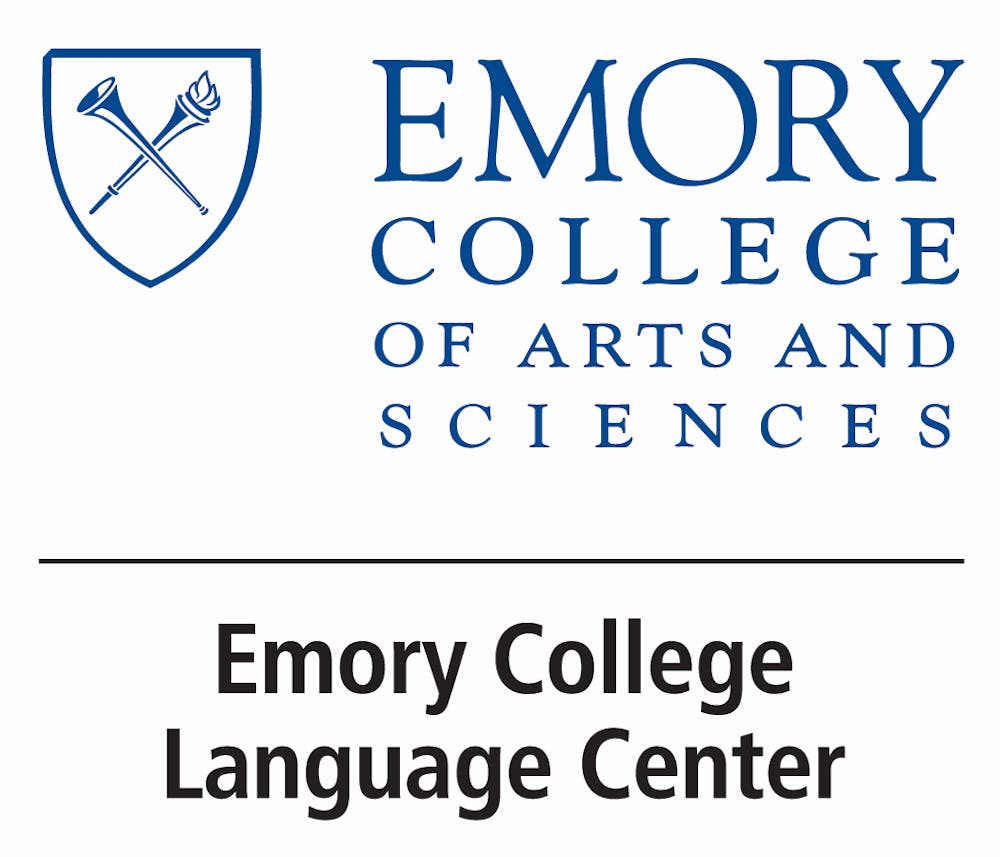The Emory College of Arts and Sciences (ECAS) offers a variety of language classes, including French, Russian, Mandarin, Arabic and more. Nevertheless, their catalog fails to satisfy the wide number of languages one may want to study at Emory, including various dialects and sign languages. The Emory College Language Center (ECLC) solves this discrepancy through its unique Structured Independent Language Study (SILS) program.
The SILS program provides free, one-on-one instruction for students interested in studying languages beyond the ECAS curriculum. Inspired by the Independent Language Tutorials program at Harvard University, it matches applicants with language partners who speak the student’s language of interest. The program's contents vary annually, with new students demanding different language expertise. Like a more personal Duolingo, this program leverages resources within the Emory community and its outside connections. The latest cohort of students started their learning on Oct. 2.
Czech, Cantonese, and American Sign Language are among the languages SILS offers. According to ECLC Program Coordinator and Director of the SILS program Sarah Shortt, some students employ this resource before studying abroad because of research interests or linguistic curiosities. In addition to educating students on less commonly taught languages, the program also has a unique pedagogical strategy, with language partners emphasizing communication over grammar and structure.
“We prefer that they don’t teach because that’s a better way to have a natural conversation in the language,” Shortt said. “We have two hours a week of conversation practice. Since COVID, we’ve gone mostly to Zoom.”
Charlotte Weinstein (23Ox, 25C), a Czech language student in the program, shared that each student in the program practices conversational speaking twice every week, an hour at a time. Through this, the students learn the nitty-gritty grammatical systems through talking.
Despite a standardized pedagogical approach, lessons are personalized depending on the language and the student. For example, Eliska Ohler (13G), the language examiner for the Czech language courses at SILS, adopted the Open Czech Curriculum from The University of Texas at Austin. This curriculum includes daily, interactive scenarios for Czech-speaking practice. Ohler explained that she uses this curriculum for its unique intimacy with modern, spoken Czech compared to traditional, grammar-focused textbooks.
“My goal as the examiner for this course was to find something that’s more modern, and that is really more relatable by today’s students,” Ohler said. “Because the way you consume media and information is different from what it was 20 years ago.”
The curriculum, with its multimodal materials such as videos, images and websites, also speaks to its students. Weinstein became interested in the Czech language after spending a summer researching ideology shifts through Czech and Slovak punk music scenes in the Czech Republic. The Cuttino Scholarship, which provides for a summer of research abroad, funded Weinstein’s study.
“I found that I’ve learned more Czech in a year and a half than I learned French in six years of high school curriculum study just because it’s one-on-one,” Weinstein said.
She also mentioned that the program’s workload is very flexible. The only widespread standard SILS students follow is meeting with their language partner twice every week.
“For me, it’s pretty much just doing one or two lessons each time we meet,” Weinstein said. “And there’s a one or two-page homework assignment for that and I’ll also just review the vocab and the workbook for that unit.”
Weinstein formed a bond with her language examiner, Tereza Mitchell. Mitchell, a music teacher originally from the Czech Republic, came into contact with SILS through Ohler, who she knew from the community of Czech international students in the United States. She chose to return to SILS as a language examiner from her positive experience as a student from a similar program during graduate school.
“It’s the best thing to teach somebody who’s interested in learning,” Mitchell said. “So that makes it so enjoyable.”
Ohler also said that she feels energized talking to the students in this program, given their enthusiasm about visiting the Czech Republic and developing connections with the people there.
However, there are still technical difficulties with the program’s continuation and expansion. Shortt mentioned that it is hard to advertise this program since she doesn’t have email access to the entire student body and therefore must rely solely on the The College Weekly newsletter. Moreover, the program can’t offer students course credit hours.
“We can’t offer a credit because we don’t have consistent materials that would pass the curriculum committee,” Shortt said.
As such, the program is geared toward self-motivated students passionate about learning languages. Ohler noted that during her career at SILS, she has not seen anyone fail the final test, likely due to the unique and personal method of education.
SILS appeals to students who enjoy traveling and exploring global research, and are curious about cultures and languages. Weinstein passionately advocates for this program, encouraging others to enroll.
“I just think more people should take advantage of it,” Weinstein said.






